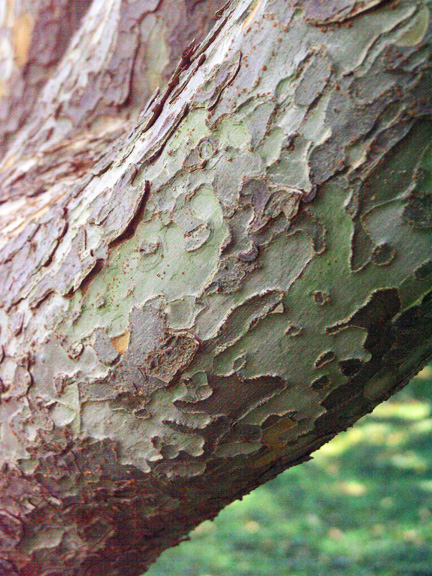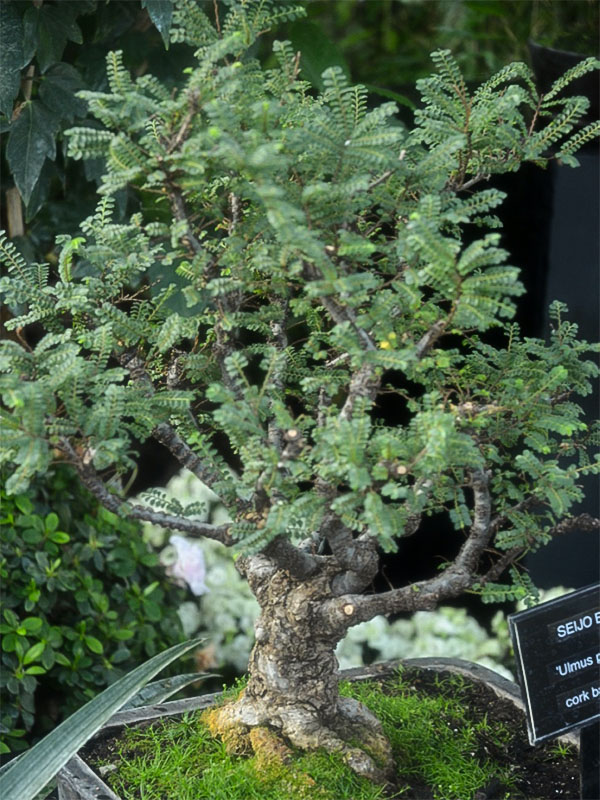
Woody > Ulmus > Ulmus parvifolia > Ulmus parvifolia
Ulmus parvifolia
Lacebark Elm, Chinese Elm
Origin: Asia: northern China, Japan, and Korea.
Mike's
Opinion


"
An underused tree with a delicate form if pruned to enhance. It has outstanding exfoliating bark. It is a plant that is seldom seen in the garden; it should be planted more often. I was impressed with this tree as a student at Niagara Parks and agree with Michael Dirr and believe it to be a tree of the future.
Michael Pascoe, NDP., ODH., CLT., MSc. (Plant Conservation)
"
| Family |
| Ulmaceae |
| Genus |
| Ulmus |
| Species |
| parvifolia |
| Category |
| Woody |
| Type |
| Tree (deciduous) |
| Pronunciation |
| USDA Hardiness Zone |
| 5b |
| Canadian Hardiness Zone |
| 4–9 |
| Temperature (°C) |
| -1.7 |
| Height |
| 12-15 m |
| Spread |
| 10-15 m |
Photographs
Description and Growing Information
Flowering Period
| General Description |
| The Lacebark elm trees has a unique bark that looks good at anytime of year. Pruning will enhance form and promote strong character. |
| Landscape |
| The Lacebark Elm can be used in urban landscapes mainly due to its pollution tolerance, often used as an accent specimen due to its exfoliating bark. |
| Cultivation |
| A tree tolerant of a variety of soil conditions and locations. Easily transplanted and tolerant of urban conditions. |
| Shape |
| Upright to rounded canopy that in some forms may be slightly penulous. |
| Growth |
| Medium |
| ID Characteristic |
| The Lacebark Elm has a unique smooth, mottled brown bark which sheds in thin flakes, showing the orange to red-brown inner bark making the tree easy to identify at anytime of year. Easy to identify amongst the Elms because of its late summer–early autumn seed set. |
| Pests |
| The Lacebark Elm tree has considerable resistance to the elm leaf beetle and Japanese horned beetle and is also unusually resistant to dutch elm disease. |
| Bark/Stem Description |
| Lacebark Elm has a smooth, mottled brown bark. That sheds in thin flakes, showing the orange to red-brown inner bark; very attractive. |
| Flower/Leaf Bud Description |
| The buds of Lacebark Elm tree are the smallest of any elm. Buds on the stem are alternate, brown in colour and are about 25–32 mm long. |
| Leaf Description |
| The leaves of the Lacebark Elm are uniquely rounded at the bottom. 1.8–6.4 cm long, alternate, simple elliptic to obovate in shape; yellow to red-purple in autumn. |
| Flower Description |
| The flowers are inconspicuous and appearing in axillary clusters during August–September; the flowers often go unnoticed because they are hidden by foliage. |
| Fruit Description |
| The fruit ripens in September–October, and are about 1.84 cm long samara that is obovate to elliptic in shape. |
| Colour Description |
| Leaves are dark green in the summer, turning yellow to red-purple in the autumn. Bark is brown to grey with a mottled khaki colouring. |
| Texture Description |
| Medium to fine leaf texture. |
| Notable Specimens |
| The Niagara Parks Botanical Gardens, Niagara Falls, Ontario. |
| Propagation |
| Fresh seed germinates quite easily. However, if it left to dry germination is a little more complicated, often requiring 30 days at 5°C stratification. Cuttings collected in May/June and rooted under mist are also successful. |

